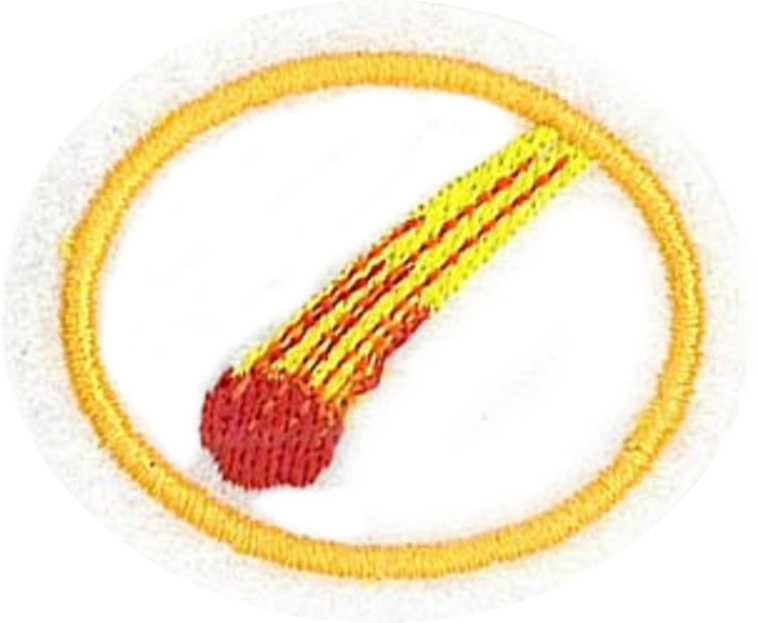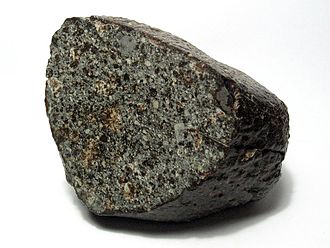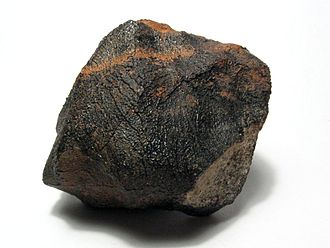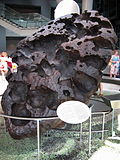Difference between revisions of "AY Honors/Meteorites"
DesignerBot (talk | contribs) m (insert nowiki-Tag infront of the honor_landing-Template so there is no paragraph infront of the language selector) |
Jomegat bot (talk | contribs) m (Add honors to Naturalist/Flora Master) |
||
| Line 8: | Line 8: | ||
|insignia=Meteorites.png | |insignia=Meteorites.png | ||
|field_trip=optional | |field_trip=optional | ||
| + | |master1=Naturalist | ||
| + | |master_group1=Flora | ||
|overview= | |overview= | ||
|challenge= | |challenge= | ||
Revision as of 02:33, 23 January 2021
| Meteorites | |
|---|---|
| Nature | |
Skill Level 123 | |
Approval authority North American Division | Year of Introduction 2014 |
See also | |
The most challenging requirement of this honor is probably this:
9. Do two of the following:
- a. Visit a local museum and identify meteorites that have been gathered form different locations around the world.
- b. Have a local rockhound/meteorite collector visit your group and present meteorites he/she has collected.
- c. Create a display of 10 photos and information about meteorites including significant information learned in this honor.
- d. Create a table game that assists others in learning about meteorites. You may model the game after popular card or board games.
1. Prerequisite: Earn the Rocks and Minerals honor.
2. What is a meteorite?
3. Explain the difference between a meteorite fall and a find.
4. Explain how meteorites are named.
5. Describe a hypervelocity crater.
6. Identify from images, draw, or photograph the following types of Meteorites. Describe the common shape, size, composition, and method of formation of each type of meteorite.
- a. Chondrites/achondrites
- b. Achondrites
- c. Iron meteorites
7. Identify and classify three notable meteorites, including one found in your country. These may include such named meteorites as Hoba, Willamette, and Allende. What makes each of your chosen meteorites notable?
8. Identify 7 Bible mentions of a meteorite or fiery rock falling from heaven (“stars,” “large stone,” “hailstone” and “brimstone” are common Biblical terms for meteorites). Discuss or describe why you think the Bible mentions meteorites.
9. Do two of the following:
- a. Visit a local museum and identify meteorites that have been gathered form different locations around the world.
- b. Have a local rockhound/meteorite collector visit your group and present meteorites he/she has collected.
- c. Create a display of 10 photos and information about meteorites including significant information learned in this honor.
- d. Create a table game that assists others in learning about meteorites. You may model the game after popular card or board games.
1
For tips and instruction see Rocks & Minerals.
2
A meteorite is a solid piece of debris from asteroids or comets originating in outer space that survives impact with the Earth's atmosphere and surface. A meteorite's size can range from a small pebble to extremely large. When a meteoroid enters the atmosphere, frictional, pressure, and chemical interactions with the atmospheric gases cause the body to heat up, and emit light, thus forming a fireball, also known as a meteor or shooting or falling star.
3
Meteorites that are recovered after being observed as they transited the atmosphere or impacted the Earth are called falls. All other meteorites are known as finds.
4
Meteorites are usually named by the finder(s) for the places they were found, usually a nearby town or geographic feature. In cases where many meteorites were found in one place, the name may be followed by a number or letter.
5
A hypervelocity crater is an approximately circular depression on the surface of a planet, moon or other solid body in the Solar System, formed by the high velocity impact of a smaller body with the surface.
Large meteoroids may strike the ground with a significant velocity, leaving behind a hypervelocity impact crater. The size of the crater will depend on the composition, degree of fragmentation, and the incoming angle of the meteorite impact. The force of such collisions has the potential to cause widespread destruction. The most frequent hypervelocity cratering events on the Earth are caused by iron meteoroids, which are most easily able to transit the atmosphere intact. Examples of craters caused by iron meteoroids include Barringer Meteor Crater, Odessa Meteor Crater, Wabar craters, and Wolfe Creek crater.
6
| Note: The editors of this answer book feel that there is an error in the official version of this requirement. More Information In question 6, the three types listed are not the three main categories of meteorites by common classification. The three choices currently given are Chondrite/achondrite, achondrite, and iron, repeating achondrite twice. Meteorites are classified into three main categories: Stony (which includes Chondrites and Achondrites), Stony-Iron (with the two main subcategories being Pallasites and Mesosiderites), and Iron. These three are also related to the origin part of the question. Stony Chondrite meteorites are thought to originate in the asteroid belt, whereas Stony Achondrite meteorites are thought to be the result of material released from collisions of the outer crust of asteroids (or other planets and planetoids). Iron meteorites are generally thought to come from the core of asteroids and planetoids. Stony-Iron meteorites likely come from the boundary area between crust and core.
Recommend the three types be changed in the question to: A. Stony (including Chondrites and Achondrites) B. Stony-Iron C. Iron. |
6a
Most meteorites are stony meteorites, classed as chondrites and achondrites. About 87% of the meteorites that fall on Earth are chondrites, which are named for the small, round particles they contain. These particles, or chondrules, are composed mostly of silicate minerals that appear to have been melted while they were free-floating objects in space.
6b
About 8% of the meteorites that fall on Earth are achondrites (meaning they do not contain chondrules), some of which are similar to terrestrial igneous rocks.
6c
About 5% of meteorites that fall are iron meteorites with intergrowths of iron-nickel alloys, such as kamacite and taenite.
7
8
And the stars in the sky fell to earth, as late figs drop from a fig tree by a strong wind.
And a great star, blazing like a torch, fell from the sky.
From the sky huge hailstones of about a hundred pounds each fell upon men.
And something like a huge mountain, all ablaze, was thrown into the sea.
5. The fifth angel sounded his trumpet, and I saw a star that had fallen from the sky to the earth.
The stars will fall from the sky, and the heavenly bodies will be shaken.
The Lord hurled large hailstones down on them from the sky.
His tail swept a third of the stars out of the sky and flung them to earth.
Then a mighty angel picked up a boulder the size of a large millstone and threw it into the sea.
The stars will fall from the sky, and the heavenly bodies will be shaken.
While you were watching, a rock was cut out, but not by human hands. It struck the statue on its feet of iron and clay and smashed them.
Then the LORD rained upon Sodom and upon Gomorrah brimstone and fire from the LORD out of heaven.
9
9a
9b
9c
9d
References
Content on this wiki is generated by people like you, and no one has created a lesson plan for this honor yet. You could do that and make the world a better place.
See AY Honors/Model Lesson Plan if you need ideas for creating one.
- Pages using DynamicPageList3 parser function
- AY Honors/Honors with problematic requirements
- AY Honors/Lesson Plans
- AY Honors/Needs Lesson Plan
- Has insignia image
- AY Honors/Naturalist Master Award/Flora
- AY Honors/Honor landing
- AY Honors/Nature
- AY Honors/Introduced in 2014
- AY Honors/Skill Level 2
- AY Honors/Approved by North American Division







